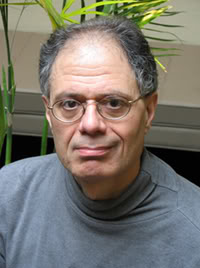In December 1980 six physicians, three Americans and three Russians, met in Geneva to discuss what the medical profession might do about the danger of nuclear war. Two years later, the organization they founded—International Physicians for the Prevention of Nuclear War (IPPNW)—represents 30,000 physicians in some thirty countries. In December 1982 IPPNW issued a report on the likely medical consequences of using nuclear weapons: “Last Aid: The Medical Dimensions of Nuclear War”, edited by Eric Chivian ’64, M.D.‘68; Susanna Chivian; Robert Jay Lifton; and John E. Mack, M.D.‘55. The editors and their publisher, W.H. Freeman, launched the book with a press conference and a reception at Boston’s Somerset Club.
“Last Aid” is a collection of essays by American, Soviet, West European, and Japanese physicians and scientists, whose frequently repeated theme is that there will not be—cannot be—any effective medical response to the effects of nuclear war. The subject is considered exhaustively in its clinical, public-health, environmental, and psychological aspects. The latter are receiving increasing attention from the medical community, according to Dr. Mack, professor of psychiatry at Harvard Medical School, who notes in the prologue:
“Three of the four editors of this volume are psychiatrists. This is not accidental. Students of nuclear arms are recognizing that serious emotional consequences derive from living with the threat of nuclear war and that the perpetuation of the arms race is in part the result of pathological distortions of thinking.”
To read "Last Aid" is to be persuaded. But the real task, as all involved acknowledge, is to get the book widely read, especially by policy makers. So the presence of Admiral Noel Gayler (retired) as one of the evening’s featured speakers was encouraging. Gayler was formerly the director of the National Security Agency, deputy director of the Joint Strategic Target Planning Staff, and commander in chief of U.S. forces in the Pacific. “Nuclear weapons have no military utility,” he said. They divert resources from “genuine defense needs.” Gayler is chairman of the Deep Cuts Campaign and a director of the American Committee on East-West Accord.
Gerard Piel, publisher of “Scientific American”, promised that the magazine’s distribution network would help promote “Last Aid”. The book is also being offered as an educational resource to groups within the arms-control and disarmament movements, including Physicians for Social Responsibility, the Lawyers’ Alliance, Businessmen’s Alert, the Campaign for a Nuclear Freeze, and many others.
One of the most heartening achievements of IPPNW has been a televised discussion of the dangers of nuclear war, which was broadcast, unrehearsed and uncensored, to 100 million Soviet viewers in June 1982. Americans saw it on PBS in October. The program was in large part the result of a longstanding friendship between two IPPN\V founders and cardiological colleagues—Dr. Bernard Lown, of the School of Public Health, and Dr. Evgueni Chazov, director of the U.S.S.R. ‘s Cardiological Institute and Leonid Brezhnev’s personal physician. At the reception Lown, a contributor to “Last Aid”, mentioned that Chairman Yuri Andropov was in charge of overseeing Soviet media at the time of the broadcast.
Dr. Eric Chivian, staff psychiatrist at M.I.T., treasurer of IPPNW, and principal editor of “Last Aid”, dedicated the meeting and the book to the memory of his former teacher, George B. Kistiakowsky, who was Lawrence professor of chemistry emeritus at his death on December 7. One of America’s senior scientific statesmen, Kistiakowsky had been an associate of and inspiration to many of those gathered at the Somerset Club on December 9. Shortly before his death. Kistiakowsky wrote an editorial for the Bulletin of Atomic Scientists offering his ‘parting words”: “Forget the channels. There is simply not enough time left before the world explodes. Concentrate instead on organizing, with so many others who are of like mind, a mass movement for peace such as there has not been before.”
